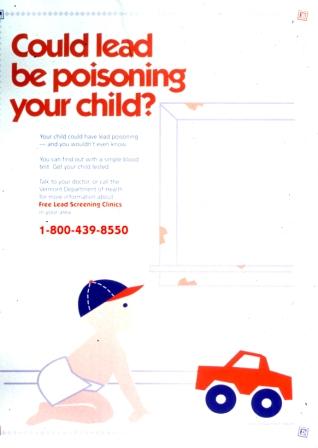 铅中毒的原因、临床表现及预
铅中毒的原因、临床表现及预 放假了,这些东西容易导致孩
放假了,这些东西容易导致孩 [图文]全美约3000个地区儿童
[图文]全美约3000个地区儿童 [图文]六问儿童血铅超标,,铅
[图文]六问儿童血铅超标,,铅 [图文]我国儿童铅中毒防治并
[图文]我国儿童铅中毒防治并 [图文]铅污染防治技术及政策
[图文]铅污染防治技术及政策 [图文]我会专家赴晋城开展儿
[图文]我会专家赴晋城开展儿 保护孩子远离铅污染,防止铅
保护孩子远离铅污染,防止铅 [组图]傅松涛教授接受《新京
[组图]傅松涛教授接受《新京 六味地黄丸铅超标论文作者表
六味地黄丸铅超标论文作者表 [组图]小心铅中毒会夺去巴哥
[组图]小心铅中毒会夺去巴哥 女子铅中毒 整月呕吐腹痛
女子铅中毒 整月呕吐腹痛 铅中毒的原因、临床表现及预
铅中毒的原因、临床表现及预 放假了,这些东西容易导致孩
放假了,这些东西容易导致孩 防治铅中毒:“蒜”你有本事
防治铅中毒:“蒜”你有本事 工业园排污致当地儿童铅中毒
工业园排污致当地儿童铅中毒 这里还有铅中毒儿童
这里还有铅中毒儿童 [图文]全美约3000个地区儿童
[图文]全美约3000个地区儿童 [组图]中国的集体铅中毒事件
[组图]中国的集体铅中毒事件 关注铅中毒从培养绿色消费方
关注铅中毒从培养绿色消费方The FDA Broadens Access to Lead Screening Test
美国FDA通过血铅筛查计划
 In September 2006, the Food and Drug Administration expanded the availability of the first simple and portable lead test system to more than 115,000 certified point-of-care locations nationwide, including health care clinics, mobile health units, and schools. This action will make it easier and faster for children and adults to be tested and treated for lead poisoning.
In September 2006, the Food and Drug Administration expanded the availability of the first simple and portable lead test system to more than 115,000 certified point-of-care locations nationwide, including health care clinics, mobile health units, and schools. This action will make it easier and faster for children and adults to be tested and treated for lead poisoning. The FDA broadened access to the test system by granting an application to categorize the test as waived under the Clinical Laboratory Improvement Amendments (CLIA). These amendments permit widespread distribution to nontraditional laboratory sites that have a CLIA waiver certificate. A test can be performed at a laboratory with a waiver certificate if it is proven to be simple, accurate, and reasonably free of harm.
At this time, the test is available only at certain hospitals, private and public health laboratories, and other testing facilities with the capability of performing moderate- and high-complexity testing. Patients whose results are borderline or positive must make a second appointment with their doctor for follow-up testing. But some people fail to do this, and doctors sometimes have difficulty reaching patients to give them their results or to discuss treatment options.
Lead poisoning in children typically results from ingesting dust from deteriorating lead-based paint or from drinking water from corroding plumbing. Lead poisoning may have no symptoms, but symptoms can include headaches, stomach cramps, fatigue, memory loss, high blood pressure, and seizures. Lead poisoning in children has been linked to learning disabilities and developmental delays.
According to the Centers for Disease Control and Prevention (CDC), more than 300,000 children younger than age 6 each year have blood levels that exceed 10 milligrams per deciliter, the threshold used to indicate lead poisoning. The U.S. Department of Housing and Urban Development estimates that 24 million homes in the United States have significant lead-based paint hazards. The American Academy of Pediatrics (AAP) estimates that 1 out of 4 homes with children younger than age 6 has lead contamination.
The CDC and the AAP have issued recommendations for screening children at ages 1 and 2 who live in high-risk homes. The LeadCare II Blood Lead Test System also will aid adults exposed to lead in occupational settings where the availability of immediate lead test results will help to identify problems early.
The ease and accuracy of the test system were evaluated by testing 516 blood samples over a two-month period at 11 sites. The test instrument applies an electrical current to the patient's blood sample, causing lead to collect on disposable sensors. Studies show that nearly 98 percent of the values measured by the test instrument were within Occupational Safety and Health Administration's recommendations for blood lead proficiency testing. Another laboratory method should be used to confirm blood lead values above 10 milligrams per deciliter.